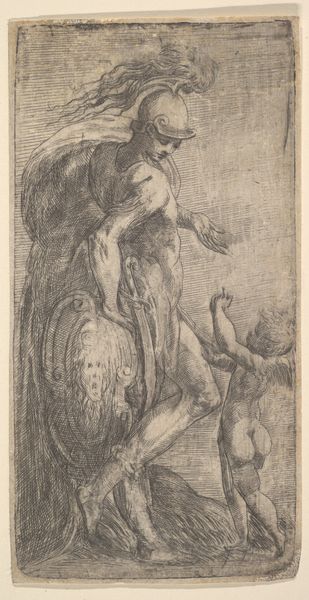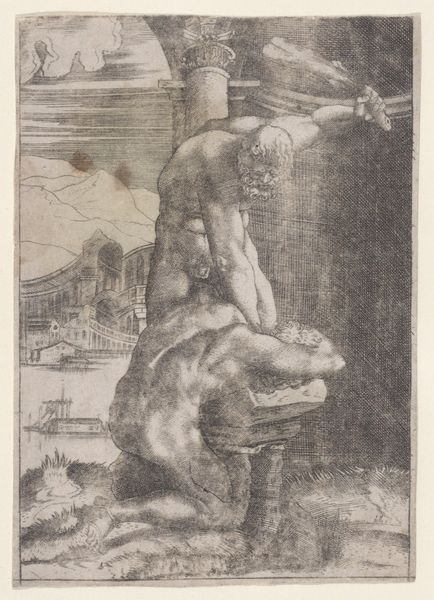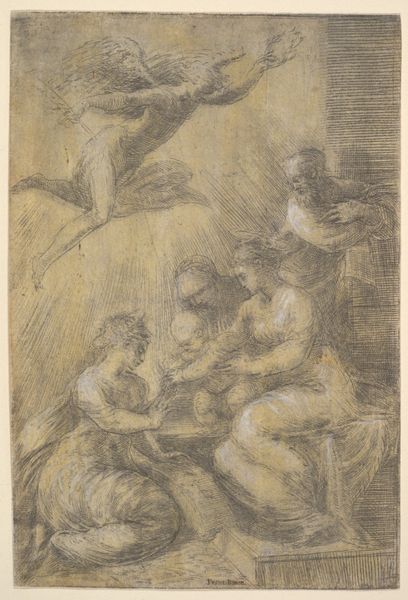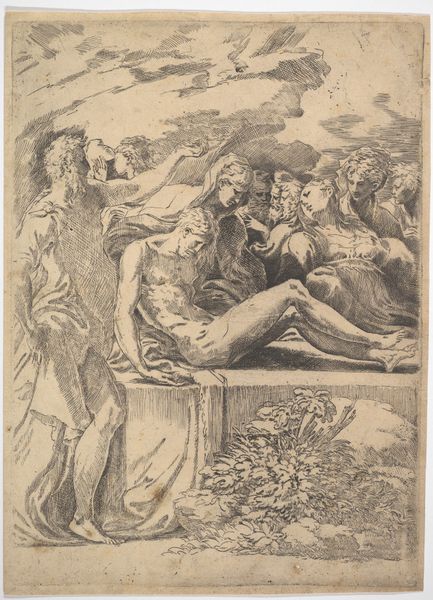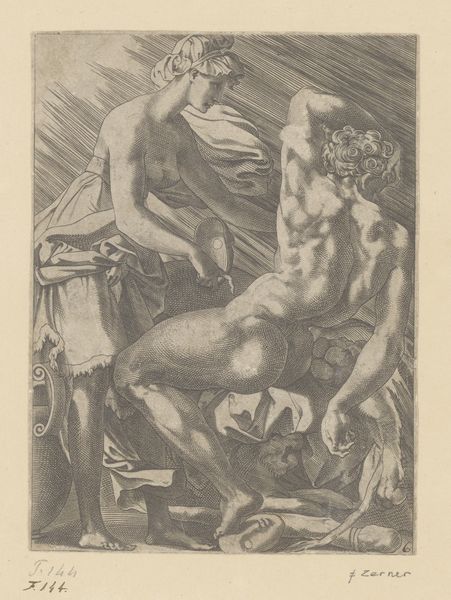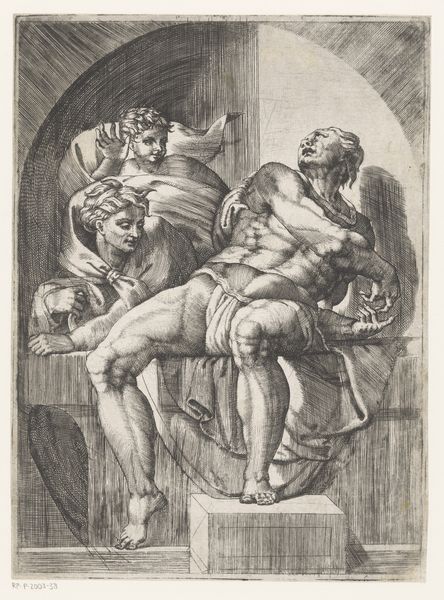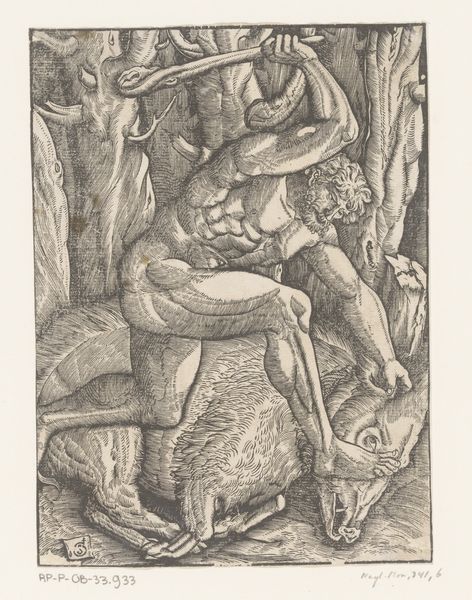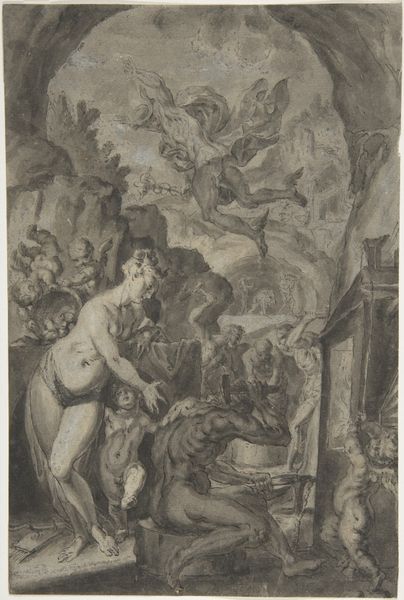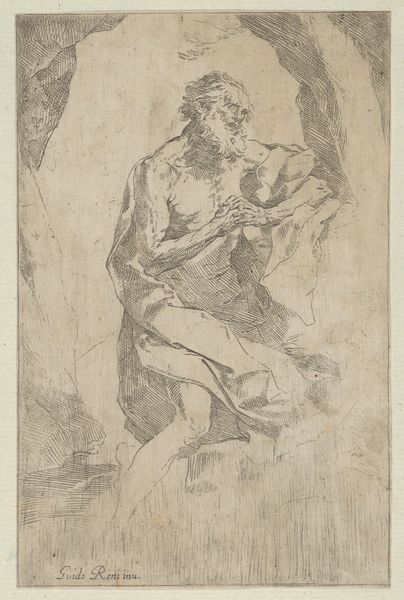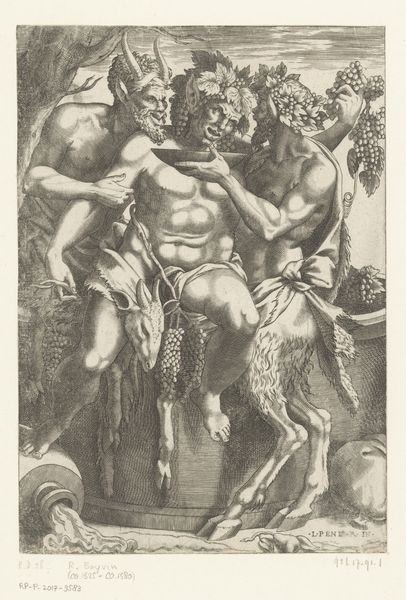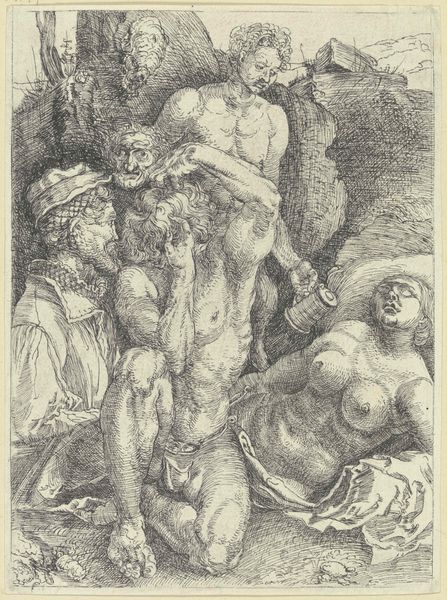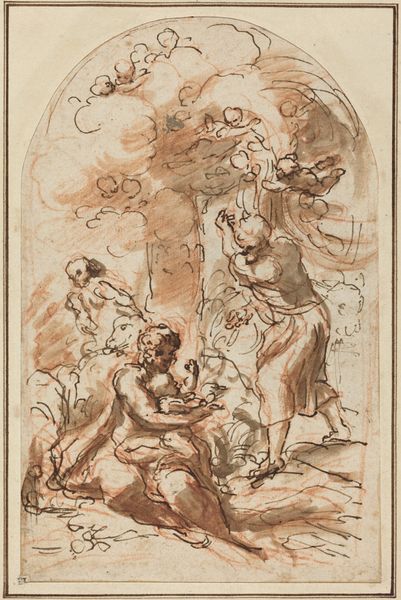
Sheet of studies with St. Jerome, seated at right and resting his right forearm on a book, at left an ecclesiastical figure wearing a cope and miter, and at bottom two putti 1570 - 1628
0:00
0:00
drawing, print, engraving
#
pencil drawn
#
drawing
# print
#
pen sketch
#
figuration
#
pencil drawing
#
history-painting
#
academic-art
#
engraving
Dimensions: image: 8 3/16 x 5 13/16 in. (20.8 x 14.7 cm)
Copyright: Public Domain
Curator: Looking at this print by Jacopo Palma the Younger, dating sometime between 1570 and 1628, one immediately notices the vigorous energy conveyed by the dense network of lines. This sheet of studies, currently residing at The Metropolitan Museum of Art, features Saint Jerome prominently, along with an ecclesiastical figure and putti. Editor: It’s incredibly dynamic, isn’t it? Almost frenetic. All those hatched lines create a sense of restless movement. It’s certainly not a tranquil depiction of Saint Jerome contemplating scripture! There’s an urgency here, an intellectual fervor perhaps? Curator: Absolutely. And Palma's choice of St. Jerome is deliberate, a figure laden with symbolic weight. We see him not just as a scholar, but as a translator, a mediator of knowledge. The book becomes a powerful emblem, a gateway between divine inspiration and human understanding. And then the inclusion of the putti. Editor: The ecclesiastical figure feels rather ominous lurking at the edge. One wonders if he is in alignment with St. Jerome or presents an antithetical idea? Do we understand his role in how the printed image, disseminated to larger audiences, affects the legacy of faith and institutions? The social implication of imagery—fascinating! Curator: An intriguing read, definitely. Note, also, how Palma uses contrasting techniques to distinguish the figures; St Jerome modeled with considerable tonal variation, as compared to the more loosely drawn figure in a mitre. In his symbolic posture with the book, St. Jerome presents himself almost as an open text, waiting to be interpreted and activated anew by the world. Editor: Indeed, Saint Jerome’s scholarly significance during the Renaissance speaks to how humanist inquiry reshaped the religious landscape, even as the Church sought to maintain authority. Looking closely, this image shows the complexities of power that influence our faith, belief and knowledge, past and present. A pertinent reminder for all.
Comments
No comments
Be the first to comment and join the conversation on the ultimate creative platform.
